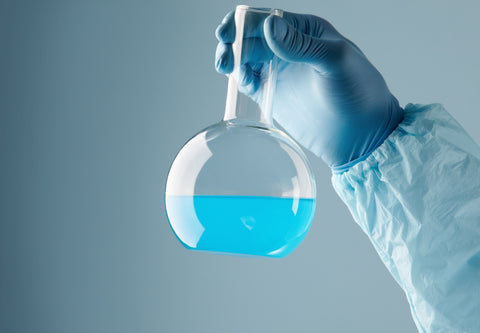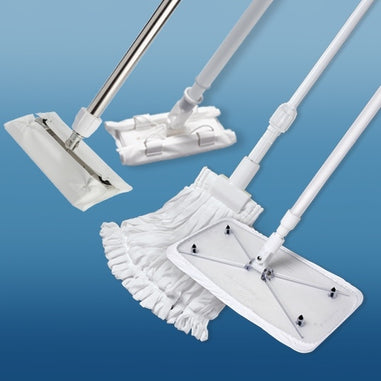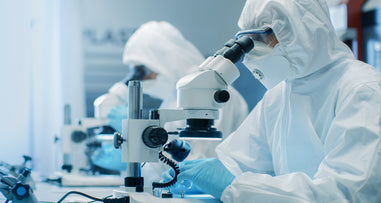- No products in the cart.
Cleanrooms play a vital role in various industries, such as pharmaceuticals, healthcare, electronics, and biotechnology, where maintaining an ultra-clean environment is crucial. To achieve optimal cleanliness and minimize the risk of contamination, disinfection is of utmost importance. However, with a wide range of disinfectants available in the market, choosing the right one can be a daunting task. In this comprehensive guide, we will explore the key factors to consider when selecting a disinfectant for cleanrooms, ensuring a safe and sterile environment for critical operations.
There are a number of factors to consider when choosing a disinfectant for cleanrooms, including:
- Spectrum of activity: The disinfectant should have a wide spectrum of activity, meaning that it should be effective against a variety of microorganisms, including bacteria, viruses, and fungi.
- Sporicidal activity: Some cleanrooms require a disinfectant that is sporicidal, meaning that it can kill bacterial spores.
- Contact time: The disinfectant should have a short contact time, meaning that it should kill microorganisms quickly.
- Residues: The disinfectant should leave no harmful residues behind.
- Safety: The disinfectant should be safe for use in cleanrooms.
- Cost: The disinfectant should be cost-effective.
Types of Disinfectants for Cleanrooms
There are a number of different types of disinfectants that can be used in cleanrooms. Some of the most common types include:
- Alcohols: Alcohols, such as isopropyl alcohol and ethanol, are effective against a wide range of microorganisms and have a short contact time. However, they are not sporicidal.
- Chlorine: Chlorine is a powerful disinfectant that is effective against a wide range of microorganisms, including bacterial spores. However, it can be corrosive to some materials and can leave harmful residues behind.
-
Hydrogen peroxide: Hydrogen peroxide is a non-toxic disinfectant that is effective against a wide range of microorganisms, including bacterial spores. It leaves no harmful residues behind and is safe for use in cleanrooms.

- Peracetic acid: Peracetic acid is a powerful disinfectant that is effective against a wide range of microorganisms, including bacterial spores. It leaves no harmful residues behind and is safe for use in cleanrooms.
Choosing the Right Disinfectant for Your Cleanroom
The best disinfectant for your cleanroom will depend on a number of factors, including the type of microorganisms that you need to kill, the contact time required, and the residues that you are willing to accept.
If you are unsure which disinfectant to choose, it is a good idea to consult with a cleanroom specialist. They can help you to choose the right disinfectant for your specific needs.
Here are some additional tips for choosing the right disinfectant for cleanrooms:
- Consider the type of cleanroom: The type of cleanroom you have will affect the type of disinfectant that you need. For example, a high-risk cleanroom will require a more powerful disinfectant than a low-risk cleanroom.
- Read the label: Before you buy a disinfectant, be sure to read the label carefully. The label will tell you the spectrum of activity, contact time, and residues of the disinfectant.
- Rotate disinfectants: It is a good idea to rotate disinfectants to prevent the development of resistance.
- Train your staff: Make sure that your staff is trained on how to use disinfectants properly.
Assess Safety and Environmental Impact:
Safety should be a top priority when selecting a disinfectant. Consider the potential hazards associated with the disinfectant's use, such as toxicity, flammability, and corrosiveness. Opt for disinfectants that are low in toxicity, non-flammable, and environmentally friendly whenever possible. Look for disinfectants that are registered with relevant regulatory bodies and have a proven track record of safety and efficacy.
Conclusion:
Choosing the right disinfectant for cleanrooms is a critical decision that impacts the cleanliness and safety of the environment. By understanding your cleanroom requirements, considering the spectrum of activity, evaluating compatibility, assessing safety and environmental impact, understanding application methods, and evaluating cost-effectiveness, you can make an informed choice. Remember to stay updated with industry standards and guidelines to ensure compliance and effectiveness. With the right disinfectant, you can maintain a sterile and safe cleanroom environment, protecting your operations and the well-being of those within it.
Additional Resources
- CDC Guidelines for Disinfection and Sterilization: https://www.cdc.gov/infectioncontrol/guidelines/disinfection/index.html
For over 40 years, Lab Pro Inc. has been committed to delivering highest quality cleanroom lab supplies, hand tools, lab equipment, chemicals, distance learning kits, and PPE apparel. Renowned by global medical device companies and laboratories, we ensure exceptional quality in every product. Contact us online or call 888-452-2776 to learn more. Discover top-notch lab supplies and elevate your experiments today!












































